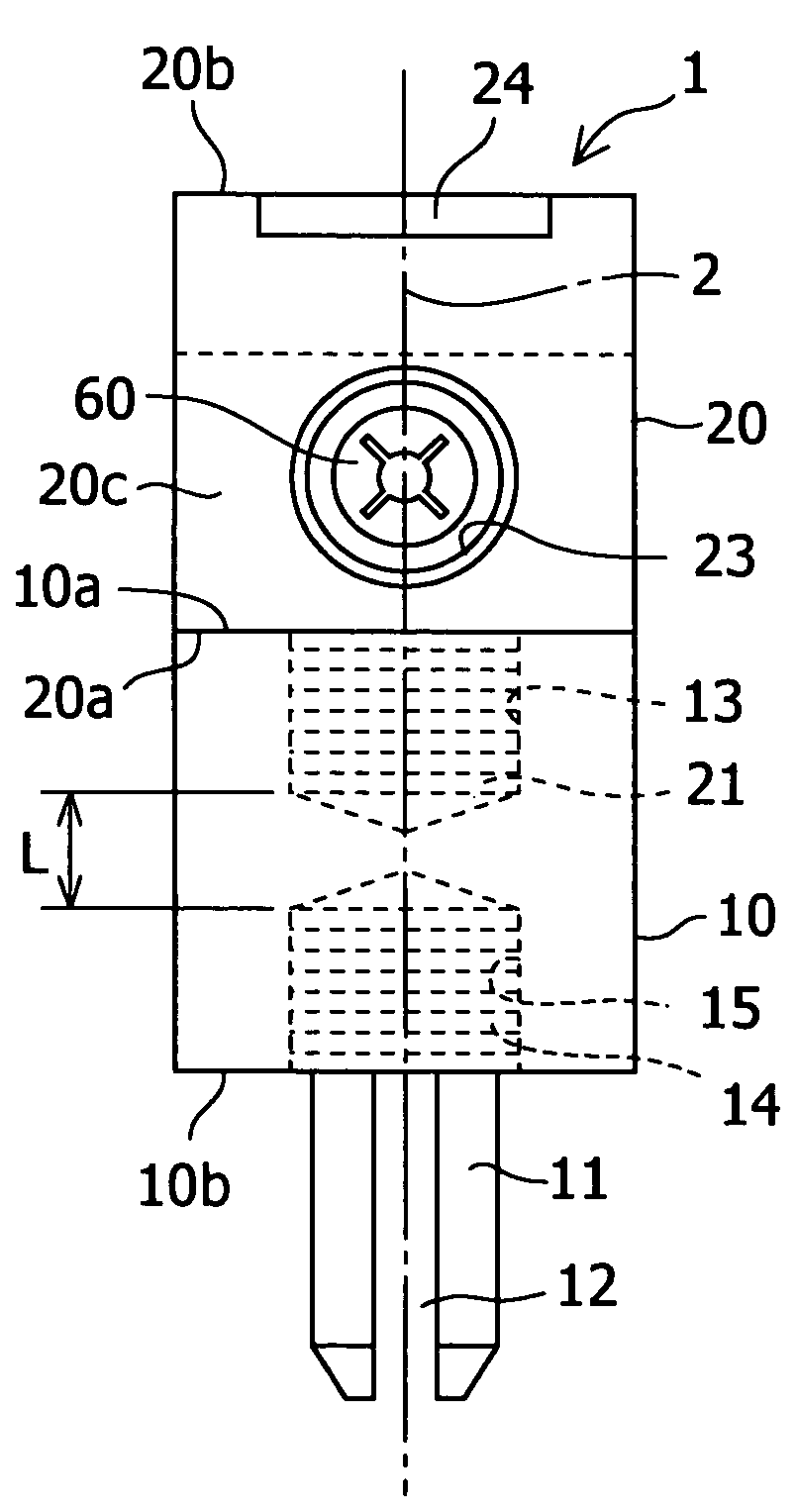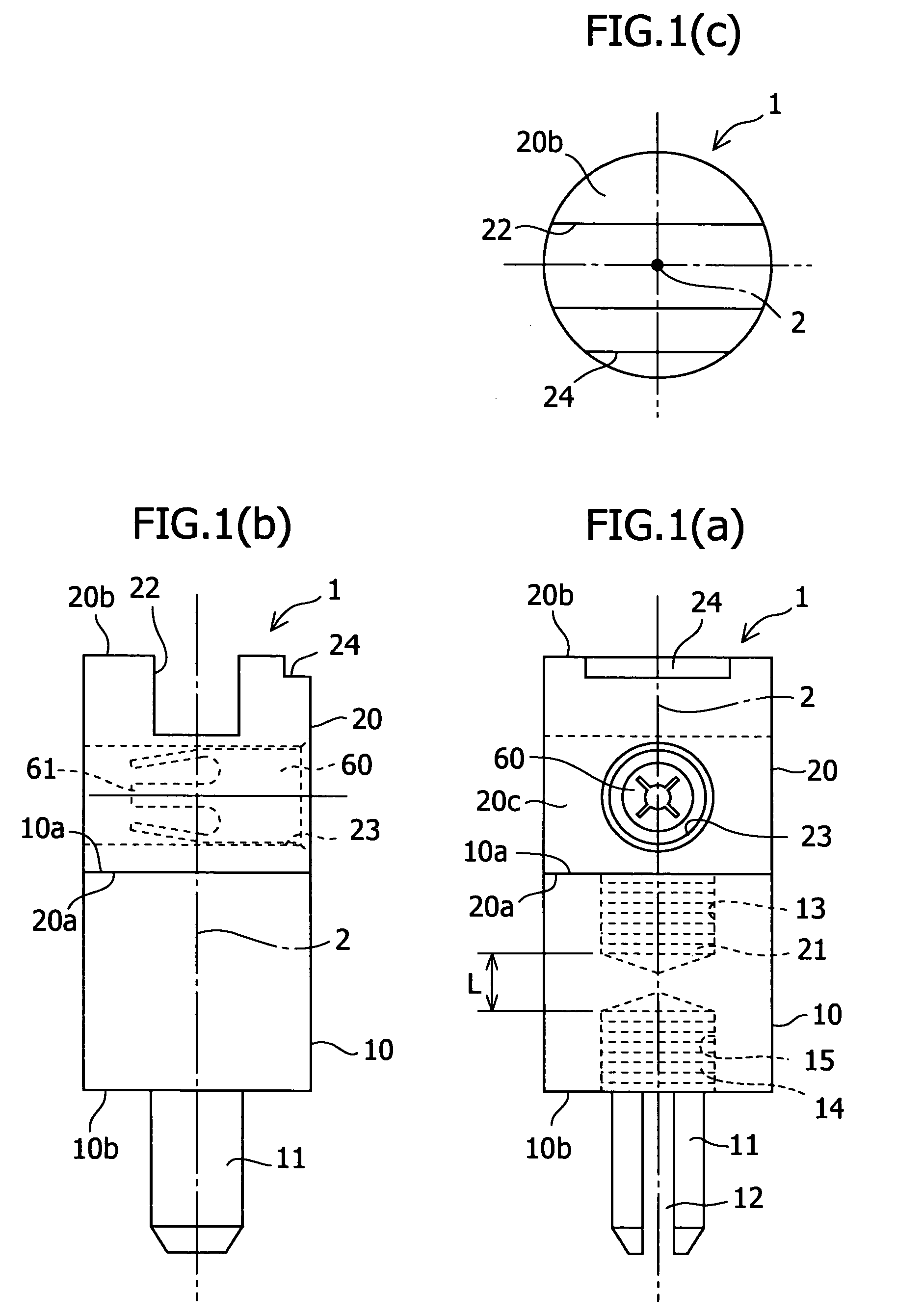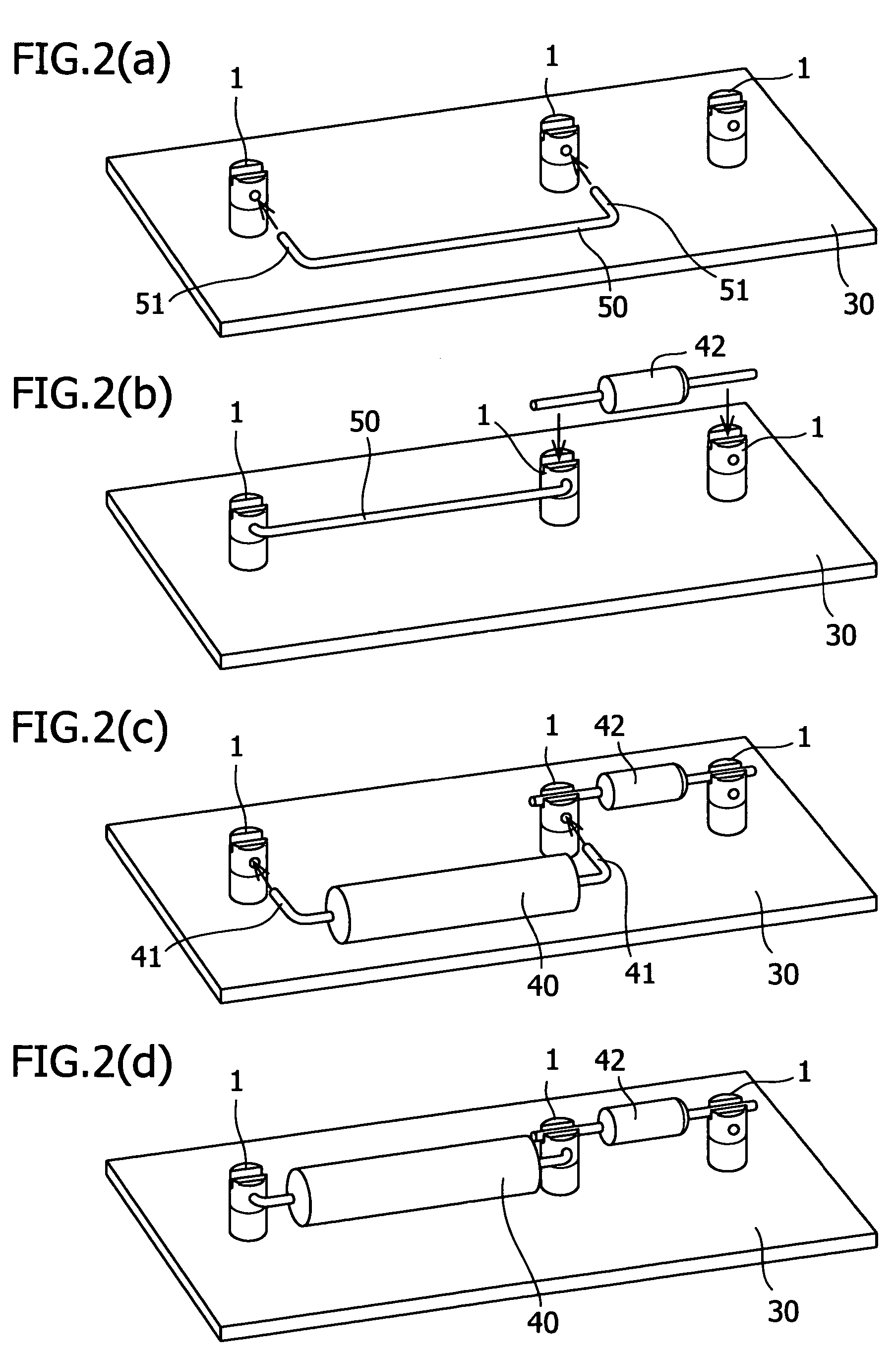[0010]In view of the situation described above, an object of the present invention is to provide a dedicated supporting member (i.e., a PTFE stud) and a method that allows the mounting of an ultrahigh-value resistor without soldering.
[0014]The PTFE stud according to the present invention includes a first portion to be mounted on a substrate and a second portion attached to the first portion so as to not be in contact with a surface of the substrate. The first portion is formed of insulating material, and the second portion has a mounting hole that penetrates the second portion so as to be parallel to the surface of the substrate. This arrangement, therefore, eliminates the need for soldering the lead of the ultrahigh-value resistor after inserting the lead into the mounting hole, thus preventing thermal shock from being applied to the ultrahigh-value resistor. Even when another component on the substrate is soldered after the ultrahigh-value resistor is attached, the first portion blocks some of the soldering heat that is transmitted from the substrate to thereby make it difficult for the heat to be transmitted to the second portion. This arrangement, therefore, can prevent thermal shock from being applied to the ultrahigh-value resistor. Thus, when an ultrahigh-value resistor is used in a measuring instrument or the like, the resistance of the ultrahigh-value resistor does not become unstable, thus eliminating the need to allow for an extra margin of error in measurement after the assembly. This arrangement further eliminates the process for temporarily attaching a heat-dissipating jig to a portion to be soldered, thereby making it possible to simplify the assembly process. Additionally, even for component replacement and / or periodic inspection during maintenance, the use of solder is not required for attaching / detaching the ultrahigh-value resistor. Thus, the measuring instrument does not generate an error.
[0015]In addition, since the first portion is formed of PTFE material having low thermal conductivity, the manufacturing cost of the first portion can be reduced. Further, since the ultrahigh-value resistor is attached by inserting the lead of the ultrahigh-value resistor into the mounting hole and bending the lead, it is possible to more reliably attach the ultrahigh-value resistor to the second portion without soldering the lead. Additionally, the mounting hole has at the inner circumferential surface thereof an engaging lug that extends from the inner circumferential surface toward the central axis of the mounting hole. Thus, upon the insertion of the lead of the ultrahigh-value resistor into the mounting hole, the lead and the engaging lug are in reliable contact with each other. As a result, it is possible to achieve stable continuity without fixing the lead with solder.
[0016]Since the second portion is formed of material that is solderable and that is electrically conductive, the air wiring can be performed by soldering to electrically connect the ultrahigh-value resistor and the wiring. Since the first portion has the mounting pin formed of solderable material, the PTFE stud can be mounted on the substrate by soldering. With the structure that allows soldering, the PTFE stud can be mounted together with another electrical component by using a reflow soldering apparatus or the like, thereby making it possible to simplify the process for mounting the PTFE stud. Since the second portion and the mounting pin are arranged so that they are thermally independent of each other, some of the heat induced when another component is soldered onto the substrate is blocked by the first portion. This, therefore, makes it difficult for the heat to be transmitted to the second portion and can prevent thermal shock from being applied to the ultrahigh-value resistor.
[0017]Moreover, the second portion has at a top surface thereof a groove for wiring, the longitudinal direction of the groove being substantially parallel to the surface of the substrate, and the groove is provided above the mounting hole relative to the substrate. This arrangement can facilitate the air wiring process. Since the longitudinal direction of the groove is substantially perpendicular to the penetration direction of the mounting hole, the process for attaching the ultrahigh-value resistor is not hampered by the air wiring, to thereby facilitate the attachment. Since the groove and the mounting hole are substantially perpendicular to each other, it is possible to prevent the through-hole from being closed by solder flowing out when soldering is performed on the groove. In addition, the second portion is rotatably provided on a face that is in contact with the first portion. Thus, there is no need to care about the direction of the mounting hole when mounting the PTFE stud onto the substrate. Further, when inserting the jig or the lead of the ultrahigh-value resistor into the mounting hole, it is possible to easily direct the mounting hole in the insertion direction.
[0018]The method according to the present invention includes a step of securing the PTFE stud to the substrate, and a step of providing a wire or an electrical component in a groove of the secured PTFE stud and performing air wiring on the PTFE stud. The method further includes a step of attaching the ultrahigh-value resistor to the PTFE stud after the air wiring, by inserting a lead of the ultrahigh-value resistor into a mounting hole of the PTFE stud and bending the lead. This method can prevent thermal shock from being applied to the ultrahigh-value resistor and also can facilitate the attachment of the ultrahigh-value resistor to the PTFE stud.
 Login to View More
Login to View More  Login to View More
Login to View More 


